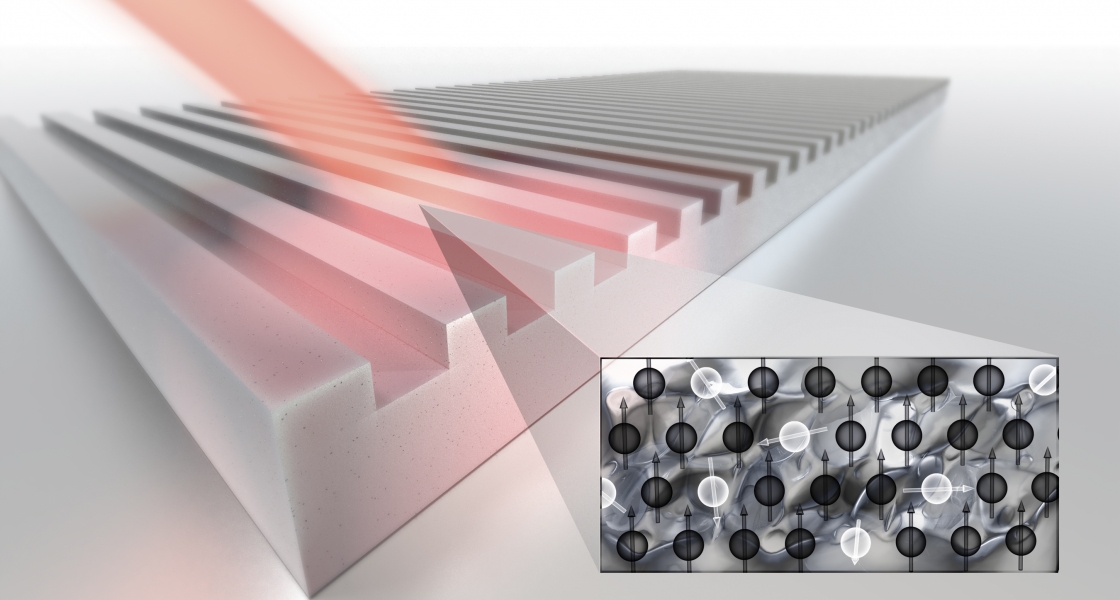The Kapteyn/Murnane group and scientists from NIST Boulder and Germany have figured out how the interaction of an ultrafast laser with a metal alloy of iron and nickel destroys the metal’s magnetism. In a recent experiment, the researchers were able to observe how individual bits of quantum mechanical magnetization known as “spin” behaved after the metal was heated with the laser. The researchers included newly minted Ph. D. Chan La-o-vorakiat, former research associates Stefan Mathias and Mark Siemens, graduate student Emrah Turgut, Fellows Henry Kapteyn and Margaret Murnane, NIST Boulder’s Tom Silva, and colleagues from the University of Kaiserslautern, Peter Grünberg Institute, and University of Denver.
Metals like iron and nickel get magnetized because the spins of all their individual atoms get lined up and point in the same direction. Since every spin is like a tiny bar magnet (with a north and south pole), when trillions and trillions of spins get lined up, the resulting magnet is large enough for people to see — which is why it’s possible to explore how magnetism works in the everyday world. Many scientists, including those who did this experiment, investigated magnets when they were children. That’s one reason they were interested in figuring out exactly what was going on with the individual atoms inside a magnetized metal.
In the magnetized alloy of iron and nickel, both kinds of atoms act like members of a marching band moving in unison across a football field. Imagine that the spins of the iron atoms are the brass section, and the spins of the nickel atoms are the woodwinds. When a laser strikes this “marching band,” at first something very strange happens: The brass players (iron spins) start walking off in random directions, but the woodwinds (nickel spins) keep marching in unison. Soon, however, the nickel spins also start walking off in random directions, and the entire magnetic band is in disarray. The whole process takes about 240 quadrillionths of a second.
Here’s what happens in detail. The iron spins likely “see” the ultrafast light more readily than the nickel spins (for reasons that are not yet completely understood). The light quickly heats up and randomizes the iron spins, which is why the brass players are the first ones to start wandering around aimlessly. However, the iron spins and the nickel spins are strongly linked by a special kind of rubber band called a quantum exchange interaction. Soon after the brass players head off in different directions, the exchange interactions kick in. Individual nickel spins get pulled out of alignment by the strong rubber bands connecting them to the iron spins that are already wandering aimlessly. And, once the brass players (iron spins) start wandering around, it takes only a few quadrillionths of a second for them to literally drag the nickel spins out of alignment.
The researchers discovered they could enhance the delay between the demagnetization of iron and nickel by adding copper atoms to their metal alloy. The dilution of the alloy with copper made the quantum exchange interactions (rubber bands) weaker. Because the rubber bands were weaker, it took longer for the iron spins to pull the nickel spins out of formation.
The researchers were able to figure out the details of the physics of demagnetization by watching what happened in response to the ultrafast laser pulse with a tabletop x-ray laser invented at JILA. The in-depth understanding of demagnetization gained through this investigation will be invaluable in the development of a new generation of magnetic data-storage devices. — Julie Phillips




